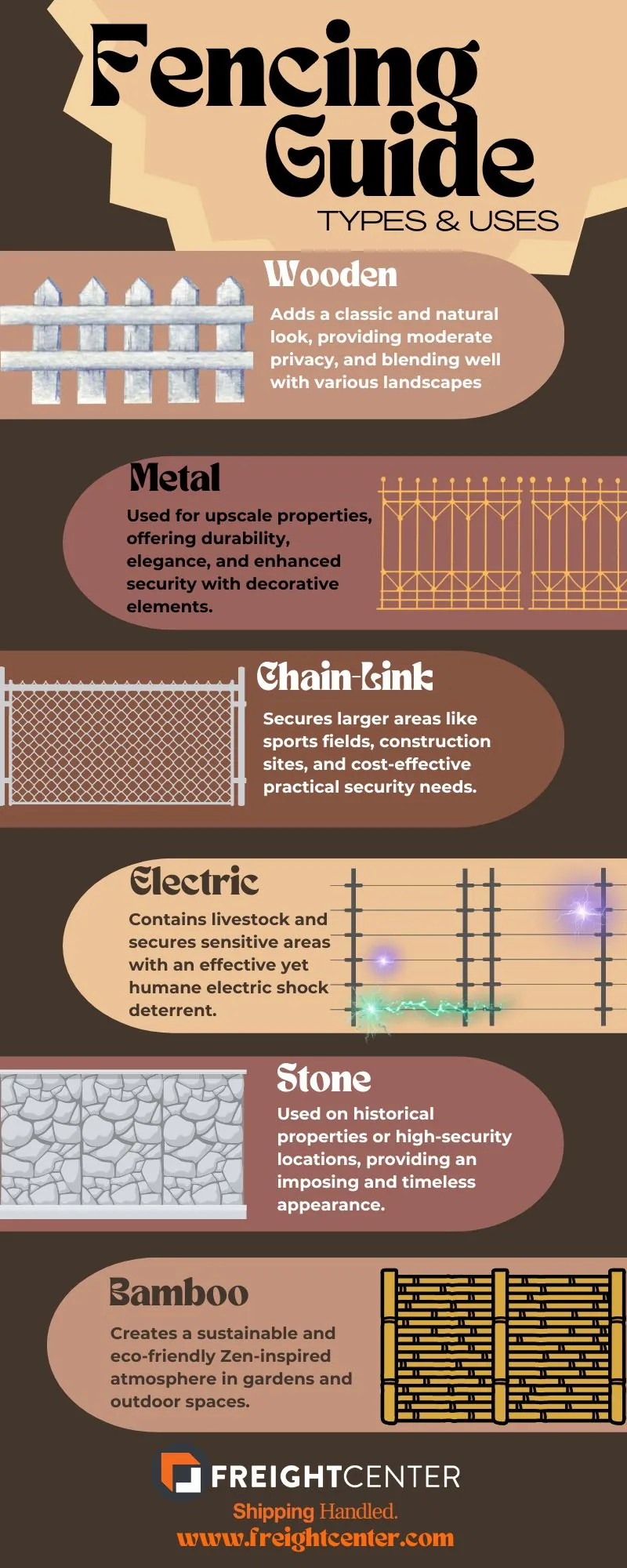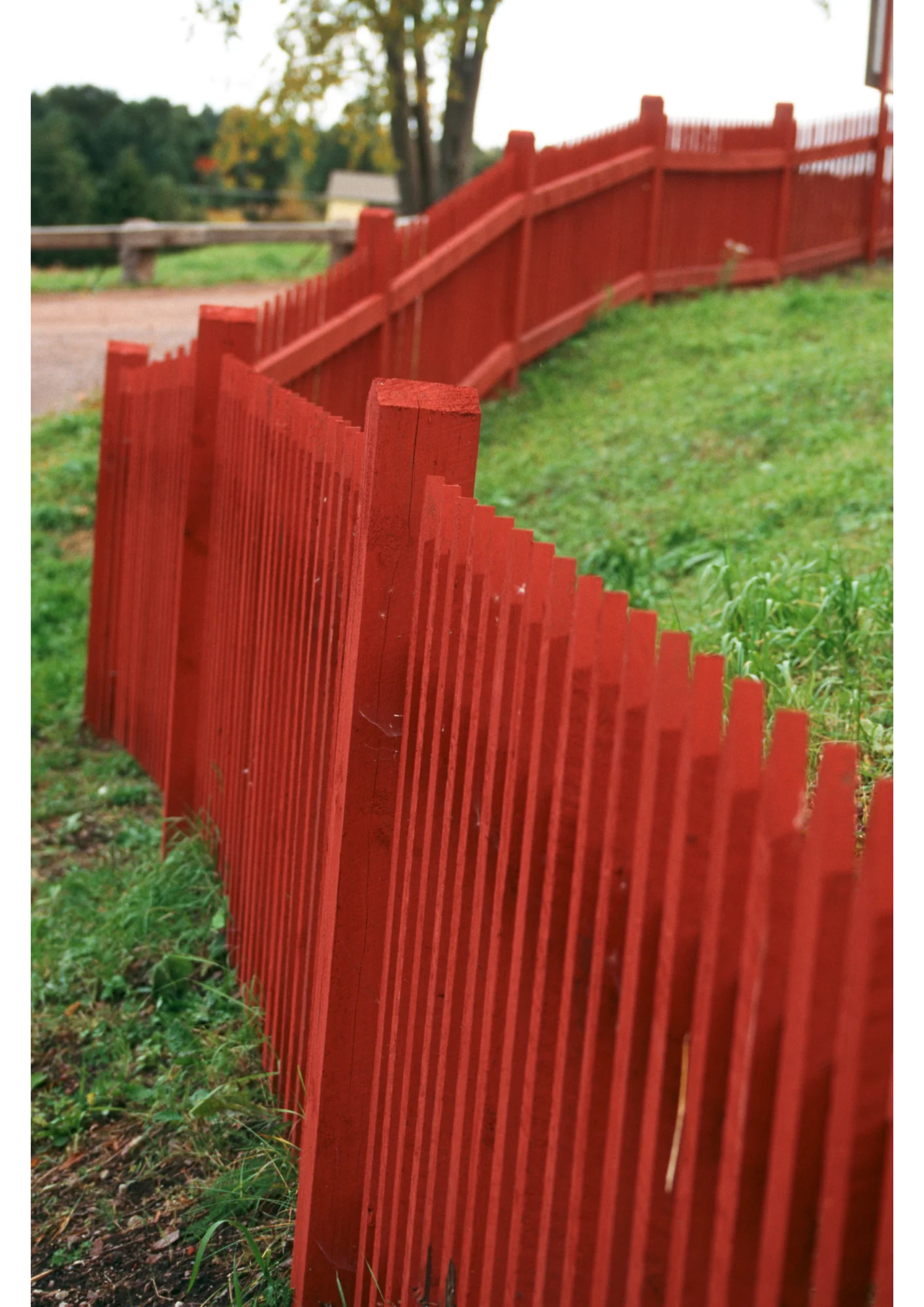
Shipping Fences
Fencing is crucial for security and aesthetics; when shipping building materials, careful packaging and selecting suitable methods ensure timely and secure delivery for successful property enhancement.
Fencing involves physical barriers or enclosures to mark boundaries, enhance security, and provide privacy in various settings. It is commonly used in residential properties, commercial establishments, agricultural fields, and outdoor spaces. Fences come in diverse materials and styles to cater to different functional and aesthetic preferences. The fencing process is vital as it establishes clear perimeters, deters trespassers, protects valuable possessions, and ensures a safe environment for pets and children. Skillfully planned and installed fencing can also enhance a property’s overall landscape and architectural appeal, potentially increasing its market value.
Types of Fencing
When choosing the type of fencing you need, define your primary objectives. Consider factors like desired privacy level, security needs, and the overall purpose of the fence (e.g., decorative, pet containment, or noise reduction). Assess your budget, as different materials have varying costs. Additionally, consider the climate and maintenance requirements to ensure the fence will withstand local weather conditions and suit your lifestyle.
Next, examine the aesthetics and style you desire for your property. Different fence materials and designs can complement the architectural features of your home and landscape. If your neighborhood or homeowners’ association has specific guidelines or restrictions, comply with them. Finally, consult with fencing professionals or experts to gather insights and recommendations tailored to your specific requirements, helping you decide on the most suitable type of fencing for your needs.
Thousands of businesses trust FreightCenter to move their freight faster, smarter, and cheaper! From unbeatable rates to top-notch service, our customers are raving about their shipping success.
See why they keep coming back!
Award-Winning Service, Trusted by Shippers Everywhere!
- 2021, 2017 & 2016 Food Logistics’ Top Green Providers
- 2021 & 2018 Supply & Demand Chain Executives’ Pros to Know: Matthew Brosious
- 2020 & 2019 Top Food Logistics’ 3PL & Cold Storage Provider Award
- 2020 & 2019 Business Observer’s Top 500 Companies on the Gulf Coast
- 2020 & 2017 SmartWay® Transport Partner
- 2020 & 2017 Food Logistics’ Champions: Rock Stars of the Supply Chain
- 2020 Best of Palm Harbor Awards for Local Businesses
- 2017 Green Supply Chain Award from Supply & Demand Chain Executive
- 2017 Tampa Bay Business Journal Heroes at Work
- 2016, 2015, & 2012 Food Logistics Top 100 Software and Technology Providers
- 2013 Tampa Bay Business 100 by Tampa Bay Business Journal
- 2013 Top 100 Great Supply Chain Partners by SupplyChainBrain
- 2012 TIA Samaritan Award Honorable Mention
- 2012, 2011 & 2010 TBBJ Fast 50 Recipient
- 2013, 2011, & 2010 Diversity Business Top Businesses

Fencing: Uses & Types
- Wooden Fences: Wooden fences offer a timeless and natural appearance, blending well with various landscapes. They come in different styles, such as picket, board-on-board, and split rail, providing moderate privacy and a classic touch to properties.
- Metal Fences (including wrought iron and aluminum): Metal fences, like wrought iron and aluminum, combine durability with an elegant look, making them a popular choice for upscale properties. These fences can be customized with decorative elements and are known for their strength, providing enhanced security and a touch of sophistication.
- Vinyl Fences: Vinyl fences are a low-maintenance and versatile option, resistant to rot, fading, and pests. They come in various styles, including privacy, semi-privacy, and picket, making them suitable for homeowners seeking a hassle-free and long-lasting solution.
- Chain-Link Fences: Chain-link fences are an affordable option that is widely used to secure larger areas like sports fields and construction sites. Their see-through design allows visibility of the enclosed space while providing a practical solution for practical security needs.
- Concrete Walls: Concrete walls offer substantial security and are commonly used around high-security locations. They provide a solid and robust barrier, ensuring privacy and deterring intruders effectively.
- Bamboo Fences: Bamboo fences provide a sustainable and eco-friendly option, adding a unique and tropical touch to gardens and outdoor spaces. They are a great choice for creating a Zen-inspired atmosphere while still serving the purpose of a reliable fence.
- Electric Fences: Electric fences are mainly used to contain livestock and secure sensitive areas. They deliver a mild electric shock to discourage unauthorized entry, providing an effective yet humane way of keeping intruders out.
- Stone Fences: Stone fences offer a timeless and grand appearance, often selected for high-security locations or historical properties. They create an imposing presence while exuding a sense of history and elegance.
Installing Fencing
The installation process for any type of fence begins with careful planning and preparation. Start by marking the boundaries and ensuring you have the necessary permits and approvals, complying with local regulations. Next, gather the required tools and materials based on the chosen fence type and layout.
Clear the area of any obstacles and level the ground to establish a stable foundation. If you plan to use posts, dig holes of appropriate depth and set them securely using concrete or gravel. A fence post digger may be the best course of action for this step. For other types of fences, follow the manufacturer’s instructions for installation.
After securing the posts or the main framework, proceed with attaching the fencing material. For wooden fences, nail or screw the panels to the posts, ensuring they are level and aligned properly. If it’s a chain-link fence, unroll and stretch the mesh along the frame, securing it tightly. Electric fences may require specific components for containment and control.
Once the material is in place, inspect the fence for any loose parts or misalignments, making any necessary adjustments. Lastly, if your fence includes gates, ensure they are properly installed and can open and close smoothly. Regular maintenance, such as painting, staining, or replacing damaged parts, will help keep your fence in excellent condition and extend its lifespan. By following these steps, you can successfully install any type of fence, creating a secure and aesthetically pleasing enclosure for your property.
Efficient Steps for Successful Fence Installation and Maintenance
Mark boundaries, secure permits, and comply with regulations.
Clear, dig, & level the area, then set posts securely using concrete or gravel.
Nail panels for wood, secure mesh for chain-link, or integrate components for electric fences.
Inspect alignment and stability, adjust if needed. Install gates smoothly. Maintain regularly for longevity and appeal.


Shipping Fencing with FreightCenter
- Expertise: At FreightCenter, we have extensive experience in handling diverse freight shipments. Our team of logistics professionals understands the unique requirements, and we work diligently to provide tailored solutions that meet your specific needs.
- Nationwide Coverage: We offer nationwide coverage, allowing you to ship to any location within the United States. Our extensive network of carriers ensures that we can facilitate pickups and deliveries in even the most remote areas.
- Reliable Carriers: We partner with a network of trusted carriers specializing in hauling. These carriers are equipped with the equipment and expertise to safely and securely handle shipments throughout transportation.
- Competitive Rates: FreightCenter is committed to providing cost-effective shipping solutions. We leverage our relationships with carriers to negotiate competitive rates, helping you save on transportation costs while maintaining the quality and reliability of our services.
Fence Shipping FAQ
Q. Can I install a fence myself or should I hire a professional?
A. DIY installation is possible for those with experience and necessary tools. However, hiring a professional ensures correct installation, compliance with regulations, and avoids potential mistakes that could compromise the fence’s integrity.
Q. How do I ensure my fencing materials are shipped safely?
A. Ensure proper packaging to prevent damage during transit. Confirm that the shipping carrier has experience handling fencing materials, and inquire about insurance or warranties for added protection.
Q. How can I estimate the cost of my fence installation project?
A. To estimate costs, consider the length, material, and desired features of the fence. Research local prices for materials and labor, factor in permit fees, and account for any additional expenses related to your specific project.
Q. How can I ensure my fence withstands the elements?
A. Choosing a durable material suited to your climate is crucial. Regular maintenance, such as applying sealants or weather-resistant finishes, also helps prolong the life of your fence.
Q. Are there any legal regulations I should be aware of when installing a fence?
A. Yes, regulations vary by location. Check with your local municipality or homeowners’ association for zoning laws, height restrictions, and permit requirements before starting your fencing project.
Fence Shipping FAQ
Q. Can I install a fence myself or should I hire a professional?
DIY installation is possible for those with experience and necessary tools. However, hiring a professional ensures correct installation, compliance with regulations, and avoids potential mistakes that could compromise the fence’s integrity.
Q. How do I ensure my fencing materials are shipped safely?
Ensure proper packaging to prevent damage during transit. Confirm that the shipping carrier has experience handling fencing materials, and inquire about insurance or warranties for added protection.
Q. How can I estimate the cost of my fence installation project?
To estimate costs, consider the length, material, and desired features of the fence. Research local prices for materials and labor, factor in permit fees, and account for any additional expenses related to your specific project.
Q. How can I ensure my fence withstands the elements?
Choosing a durable material suited to your climate is crucial. Regular maintenance, such as applying sealants or weather-resistant finishes, also helps prolong the life of your fence.
Q. Are there any legal regulations I should be aware of when installing a fence?
Yes, regulations vary by location. Check with your local municipality or homeowners’ association for zoning laws, height restrictions, and permit requirements before starting your fencing project.

